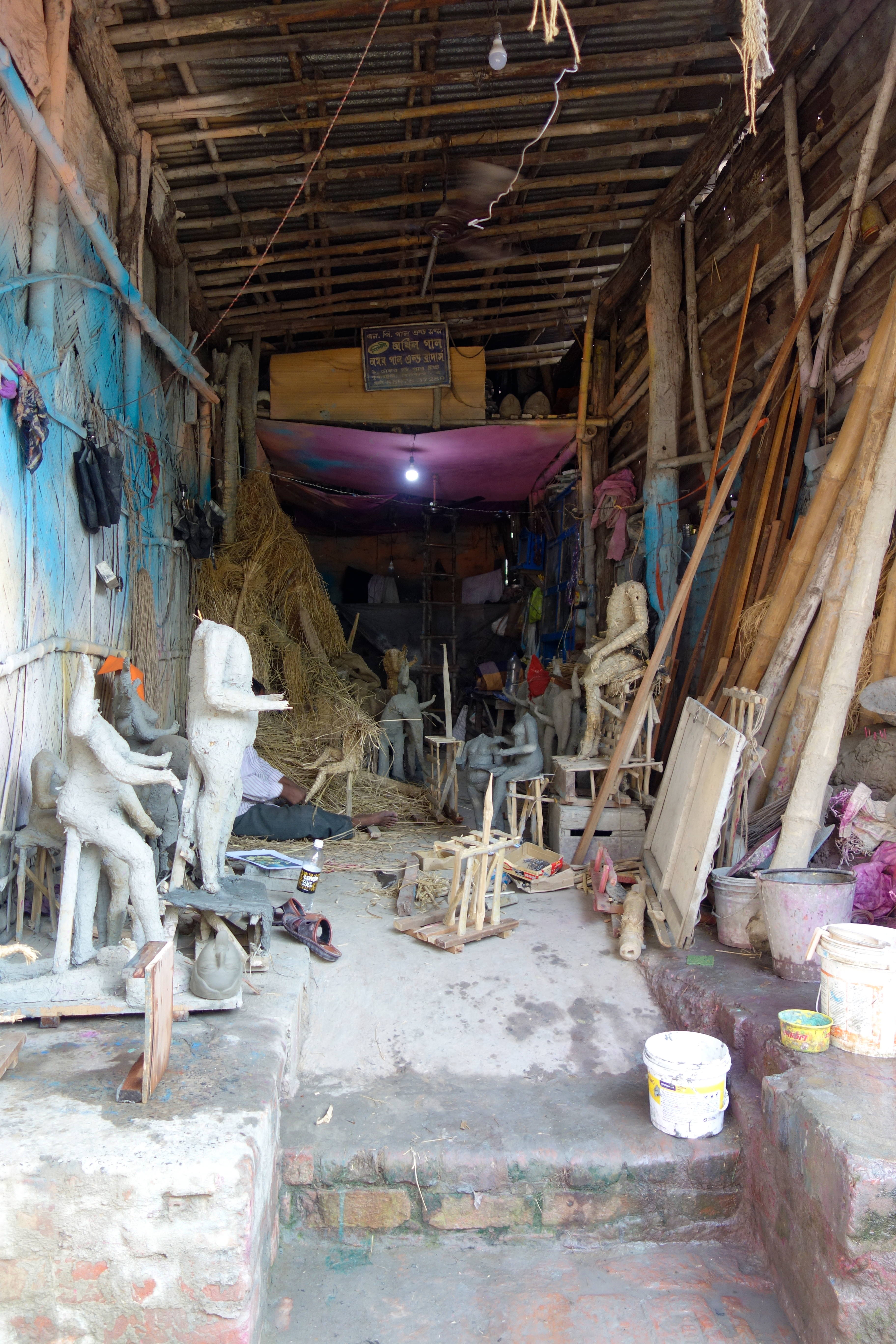BEGINNING WITH CLAY
Before beginning the clay work, Dada (a term of respect given to a male elder, I have taken to calling Buddhadeb this) comes along and affixes the armature to a base. He also bangs in some 50 mm nails - at the knee area of the crossed leg to hold it in position and at the bend of the arm to keep it strong - ensuring no movement before the clay is added. When thinking of the eco credentials of any project we develop integrating the Kumartuli techniques, these nails and where they end up, or how they get substituted, will need to be considered. I’ve been interested in life cycle in relation to sculpture for some time and have begun thinking about a durational installation that can be submerged into, say the Coventry canal, or be washed away by the rain. Leaving random nails lying around will clearly be an issue.
First you apply a rough clay mixed with rice husks across the surface of the straw. This husks enable it to better bind to the straw and gives it more strength. This needs time to dry and is as far as I’ll get today with the clay stage.
 Mixing rice husks with clay for the rough base layer
Mixing rice husks with clay for the rough base layerI begin to question whether the Hindu idol forms of the Kumartuli should be used in any public exhibition resulting from this research trip, at least not without extreme sensitivity and careful consultation. They come loaded with so much nuanced meaning that, being an outsider to the Hindu community, I could easily get something wrong and cause offence. These forms hold so much meaning in their very essence to so many, I wonder how easy it would be for people to see beyond this or be open to these forms being used for another end?
I move a couple of metres forward in the workshop, away from the straw area, to begin working on the clay.
I’m in my work clothes, long jean shorts clean but heavily stained with concrete, rubber and various other residues of their life in the studio, an oversized t-shirt and work boots, but sitting crossed legged on the floor and because my jean shorts are slightly big and so sit quite low on my waist, a slither of the small of back can be seen, though I’m not aware. Debasrita notices straight away, however, and pulls her chair (a small broken bit of plastic palette) to straddle me and hide my modesty. So interesting. And I was grateful as without her I wouldn’t have been aware why so many of the artisans may have come to investigate my ‘work’.
I’m in my work clothes, long jean shorts clean but heavily stained with concrete, rubber and various other residues of their life in the studio, an oversized t-shirt and work boots, but sitting crossed legged on the floor and because my jean shorts are slightly big and so sit quite low on my waist, a slither of the small of back can be seen, though I’m not aware. Debasrita notices straight away, however, and pulls her chair (a small broken bit of plastic palette) to straddle me and hide my modesty. So interesting. And I was grateful as without her I wouldn’t have been aware why so many of the artisans may have come to investigate my ‘work’.
Just before we break for lunch which signals the end of our first ½ day I decided to go rogue and attempt some free-form application of the clay. I used the rough clay mix to smear on to the thin ply base. It’s interesting how instantly this action was noticed and perceived as an error by Dada. His response is so insightful and highlights how formulaic their process must be. Dada is genuinely unhappy about the outcome of this small rebellion. It will not look good once it’s painted. I had decided I wanted a rough finish to the plinth Annapurna would be seated on. He shows me a liquid clay they use to give it a smooth surface.
I sense already that my instinct to input creatively sets an interesting juxtaposition to the very regulated system I’m starting to understand that they have.
Saturday 14th March 2020
I sense already that my instinct to input creatively sets an interesting juxtaposition to the very regulated system I’m starting to understand that they have.
Saturday 14th March 2020

British Council and City of Culture 2021, Coventry - International Changemakers, 2020